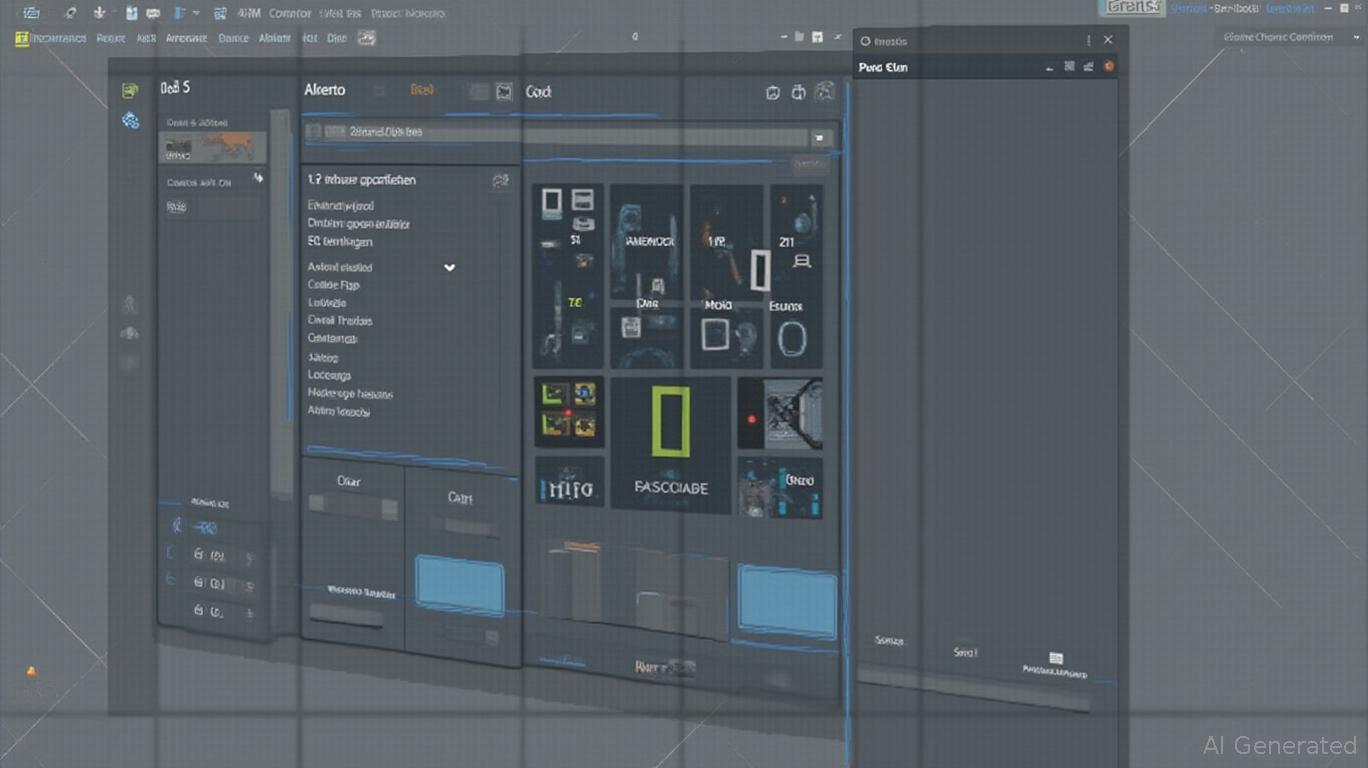Unity Software's Strategic Shift Fuels Financial Tech Momentum, but Risks Linger
Unity Software's Q4 2024 earnings reveal a company at a crossroads: its disciplined pivot toward high-margin AI-driven solutions has delivered strong free cash flow and margin improvements, but execution risks loom as it transitions to its new Vector advertising platform. Meanwhile, pre-market stock movements and favorable macroeconomic indicators suggest broader tailwinds for financial technology investments—provided investors tread carefully around overvalued assets.
Strategic Focus Drives Financial Resilience
Unity's Q4 results underscore its commitment to舍弃 low-margin businesses. Revenue from its strategic portfolio rose 4% to $442 million, with Create Solutions (up 9%) and Growth Solutions (up 2%) leading growth. The launch of Unity 6—a 3D development tool adopted by Toyota and Raytheon—sparked a 50% surge in industry revenue. Crucially, adjusted EBITDA hit $106 million (23% margins), a 26% beat over guidance, while free cash flow jumped 74% year-over-year to $106 million. This financial discipline has bolstered its balance sheet, with $1.5 billion in cash and a reduced stock-based compensation dilution rate (now under 2%).

The Vector Platform: Catalyst or Headwind?
The star of Unity's future is its AI-powered Vector advertising platform, which aims to revolutionize ad targeting for gaming and apps. However, the migration to Vector—which began in late Q1 2025—is causing short-term revenue volatility. Management's cautious Q1 guidance ($405–415 million revenue, $60–65 million EBITDA) reflects this transition pain. Risks include scaling delays and competition from rivals like Adobe and Amazon. Yet, the long-term payoff could be substantial: Vector's ability to optimize in-game ads and user experiences could unlock new revenue streams in the $500 billion interactive content market.
Pre-Market Volatility and Analyst Sentiment
Unity's stock has been a rollercoaster, rising 5.7% to $27.70 in early June after a Jefferies upgrade to Buy ($29 target). Yet, options activity reveals mixed sentiment: 56% of “smart money” bets are bearish (e.g., $174,636 on $25 puts), while 43% are bullish (e.g., $51,600 on $42 calls). The RSI (14) is in overbought territory, hinting at near-term corrections. Investors should heed this caution—especially as the stock trades near its 52-week high of $28.34.
Macro Backdrop: Strong Jobs, Uncertain Policy
The May 2025 U.S. jobs report added 139,000 nonfarm payrolls, with health care and leisure sectors leading growth. Wage growth hit 3.9% year-over-year, suggesting consumer resilience. Yet, federal job cuts and tariff-driven inflation risks loom. For Unity, these factors are a double-edged sword: strong consumer spending could boost demand for interactive content, but tech-heavy sectors remain vulnerable to macro instability.
Investment Takeaways
1. Optimism on Unity's Long-Term Vision: The shift to AI-driven solutions and partnerships like Android XR position Unity as a leader in real-time 3D development. The stock's $28 consensus target suggests 2% upside, but investors should wait for Vector's monetization clarity.
2. Pre-Market Caution Required: While Unity's fundamentals are improving, its overbought RSI and mixed institutional sentiment argue for patience. Consider dollar-cost averaging or waiting for a pullback below $25.
3. Sector Exposure via Selectivity: Financial tech stocks like Unity benefit from macro tailwinds but require scrutiny. Avoid overvalued pre-market movers lacking clear growth catalysts.
In conclusion, Unity Software's strategic rebirth offers compelling opportunities in financial tech, but investors must balance optimism about its AI future with short-term execution risks. The market's enthusiasm for Vector's potential is clear—now the proof will be in the pudding.

Comments
No comments yet